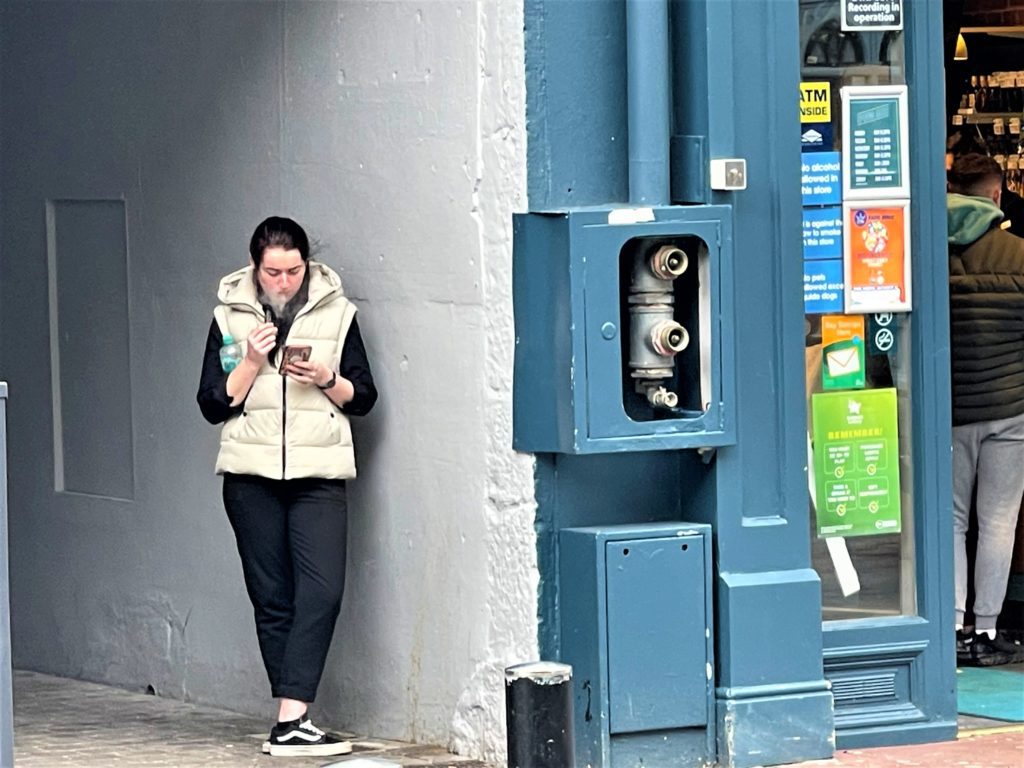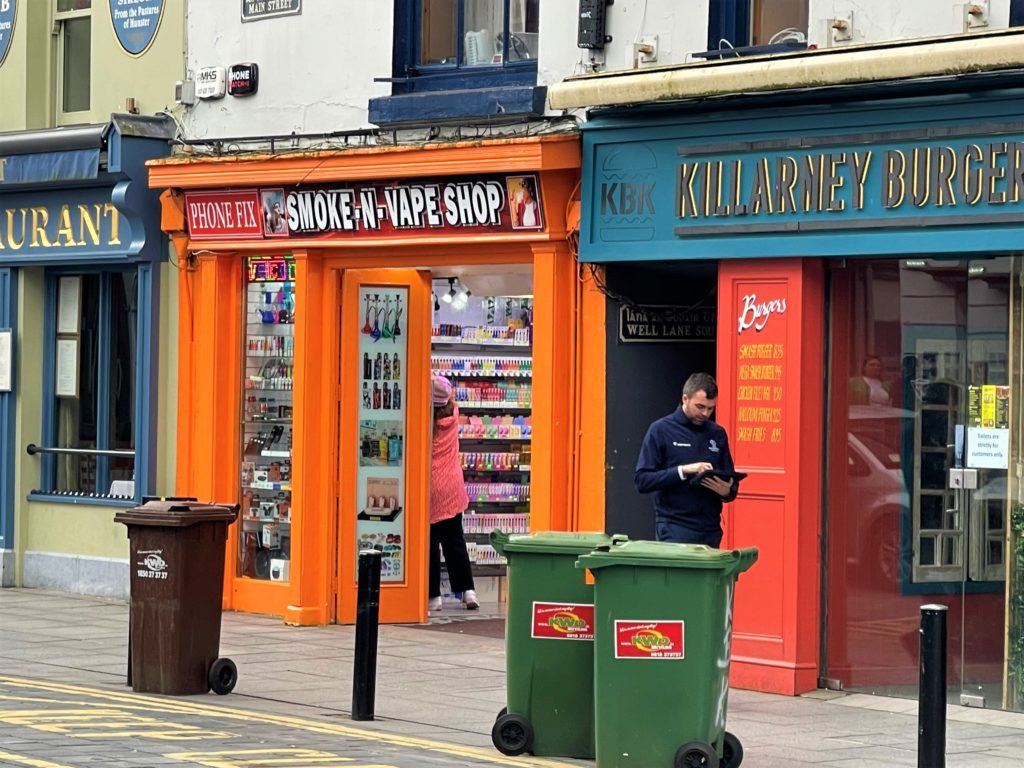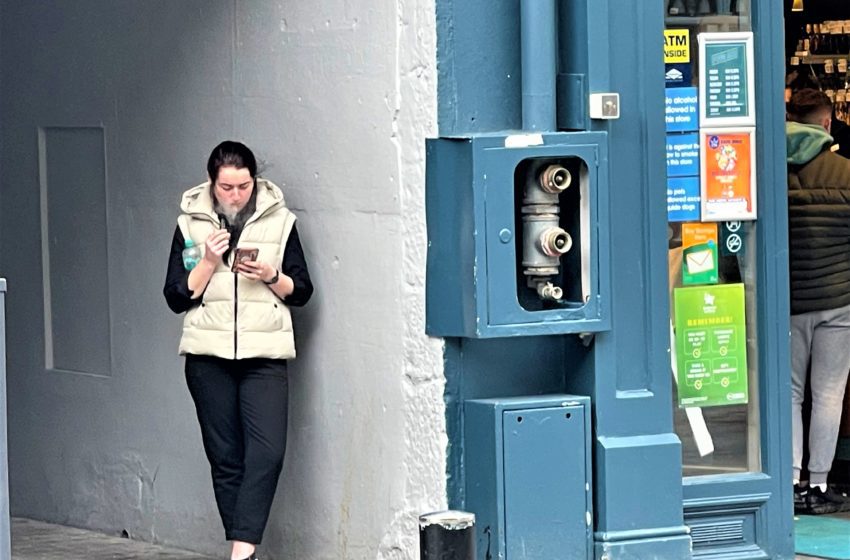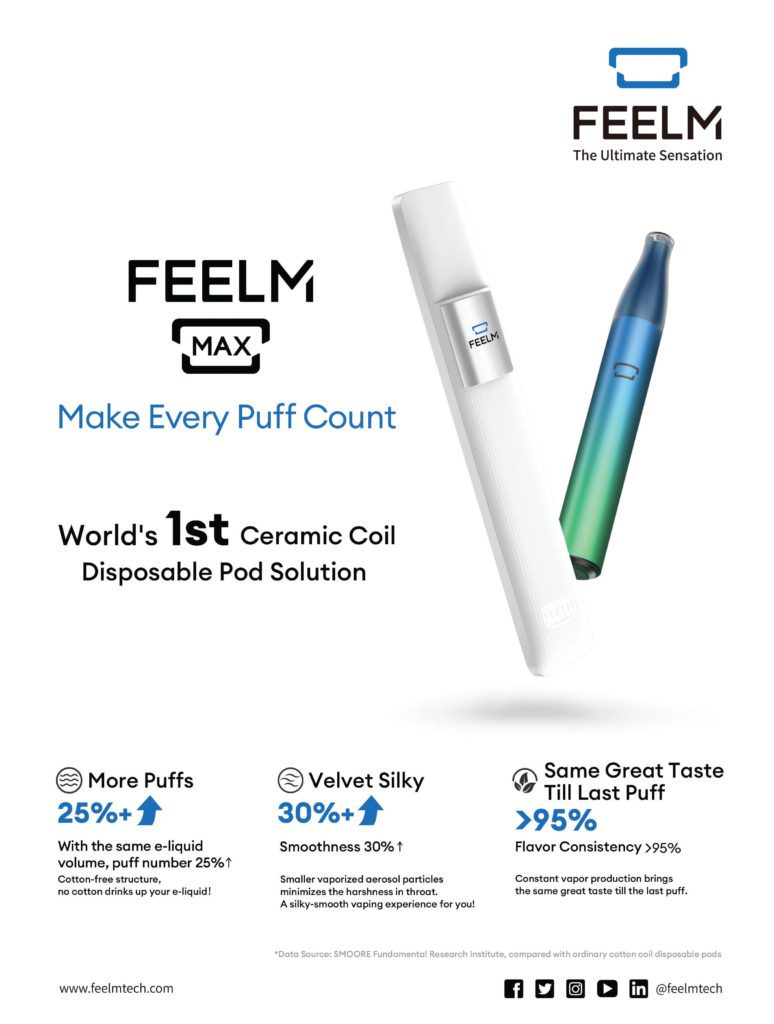
Vaping is beginning to take hold in Ireland’s smaller cities, but combustibles are still king in Dublin.
By Timothy S. Donahue
Going on a trip to Ireland, I had expectations. I thought the vaping community would be small and just learning about new products coming to market. No. That wasn’t how it was at all. In Ireland, and I imagine it’s the exact same thing one could witness across the entire European Union, people understand that vaping is better than smoking combustibles. Many former cigarette smokers, an estimated 200,000, have already made the switch.
According to a 2021 survey from Eurobarometer, Ireland has the highest rate of people who use e-cigarettes in the European Union at, 7 percent, while the EU average is 2 percent. There seemed to be a lot of vapers across Ireland. Media reports suggest that Ireland has a youth vaping problem. When a vape shop owner in Dublin was asked about this, he said that the people who vape are mostly former smokers, but there are youth who would have started smoking combustible cigarettes that instead started vaping.
This was evident in Killarney, a town of 15,000 in southwest Ireland. It also has about 1.7 million tourists per year. College kids were vaping here. They were also smoking combustible marijuana. They were also drinking at noon on Tuesdays and Wednesdays and so on. It’s Ireland. Drinking is sort of a thing. I asked a few students if they would be smoking combustible cigarettes if vaping didn’t exist. The answer was an overwhelming yes. It’s university; nicotine use is a thing too. Just two years ago, everyone smoked combustibles.
Not anymore. Vaping is the way today. Many said they even have their parents, who were two-pack-a-day to three-pack-a-day smokers, vaping now. The older folks like the simplicity of the pods. The younger group likes the flavor varieties in disposables. Walking the streets of downtown, you could witness vapers from a variety of age groups and economic backgrounds. Flavors are also extremely popular.
“The older folks want the tobacco taste first,” a college student said. “Now, they vape a while, and they don’t want that taste; my mom loves the watermelon now. She’s stopped smoking cigarettes completely and now just vapes. She used to smoke two packs a day.” Watermelon is the favorite flavor in Ireland, followed by Blue Ice, a straw poll of shops in Killarney and Dublin has confirmed.
Ireland had no age restrictions on the purchase of vaping products until recently. In November of 2022, the country’s minister for health, Stephen Donnelly, and the minister for public health, Frank Feighan, received government approval to introduce additional restrictions on the sale and advertising of nicotine inhaling products, such as e-cigarettes.
Under the new proposals, the sale of e-cigarettes and related vaping products became prohibited from self-service vending machines, from temporary or mobile premises and at places or events for children. In addition, advertisements for e-cigarettes are now prohibited on public transport, in cinemas and near schools.
At the time the proposal was announced, Feighan said the legislation was necessary because tobacco smoking continues to kill approximately 4,500 people in the island country each year. “We recognize that nicotine inhaling products are used by some adult smokers to assist them to quit tobacco smoking,” he said. “However, we are clear that these products are of no benefit to our children and young people or to nonsmokers, and that is why we are taking this action.”
All Irish and EU vaping devices and e-liquids are regulated by the Tobacco Products Directive 2. The Tobacco Products Directive regulates nicotine strengths, bottle sizes and ensures that communications about products are factual and clear. The ingredients that make up all Irish regulated vaping products must be provided to the Health Service Executive, with detailed information, including chemical studies and risk assessments.
These regulations act as an important barrier to any products that do not adhere to EU standards entering the Irish market and can be contrasted sharply with the absence of similar regulations in the U.S. and elsewhere, according to Vape Business Ireland (VBI), the largest vapor industry trade association in Ireland.

VBI is advocating the Irish government to consider more evidence-based policymaking decisions, which in turn will allow for more evidence-based regulation of vaping products in Ireland. The trade group wants the government to “deliver effective, evidence-based and balanced regulation of vaping products,” according to its leadership.
There were at least four vape shops in Killarney. None of the owners would speak to me on the record because they said they aren’t “trying to call attention to themselves.” The truth is probably more along the lines of the massive distrust of the media that Ireland has. Owners probably believed I didn’t just want to know about vaping in Ireland and what types of products were popular and that I instead had more dubious plans for this article.
One shop attendant, Karen, said that most of her customers are college-aged; however, many of them were buying combustibles from her store until vaping became more popular in the country around 2020. She thinks youth are going to experiment with things like drinking, drugs and nicotine and that if there are safer ways to consume these products, government regulations shouldn’t hinder their availability.
According to the Global State of Tobacco Harm Reduction (GSTHR), the overall smoking prevalence in Ireland has decreased since 2006. More than 23 percent of the adult population in Ireland are current smokers, down from 29 percent in 2006. This means there are now approximately 893,778 smokers in the country. An estimated 26 percent of men still smoke combustibles, and for women, the figure is an estimated 21 percent.
In Ireland, there are 265,500 vapers in the country, giving an adult vaping prevalence of 6.7 percent, according to the GSTHR. There is a requirement to ensure that vape packaging contains a health warning and vaping devices can be purchased without a prescription. There are no legal restrictions on their use in public places. Heated-tobacco products cannot be marketed, and the situation is “quite complicated” for snus. While it is illegal to import snus for trade or to buy the product online, it is possible to import it for personal use.
In Dublin, it seemed that combustibles were still king. A short walk around the city, and there are cigarette smokers everywhere. There were also cigarette butts littering the streets everywhere we walked. Places like Temple Bar, an insanely popular tourist neighborhood littered with drinking establishments where few true Dubliners visit anymore, hundreds of people were smoking cigarettes and marijuana openly, and vapers could be seen mixed in the crowd but in much lower numbers.
There are an estimated 50-plus vape shops in Dublin; however, it seemed like a lot more. Still, no vape shop owner or employee would speak with me on the record. Vaping products could also be found at many discount shops that sold everything from shampoo to clothing throughout Ireland.
There was even a vape shop in the small fishing village of Howth, a suburb of Dublin. While we only went to see Dublin and various places around County Kerry where Killarney is situated, it wasn’t hard to find vaping products anywhere we visited. One cab driver told me that he was sure everyone in Killarney drank and used nicotine in some form or another and that vaping is definitely more popular than combustible cigarettes in the small town.
Overall, the rising popularity of vaping in Ireland can’t be denied. The harm reduction benefits of vaping are widely known, and even many cigarette smokers told Vapor Voice they wanted to quit combustibles and have or would try vaping products to try to end their compulsion to smoke cigarettes. It’s quite the contrast to the United States, where many doctors still believe nicotine causes cancer and are skeptical of the harm reduction benefits of vaping.


